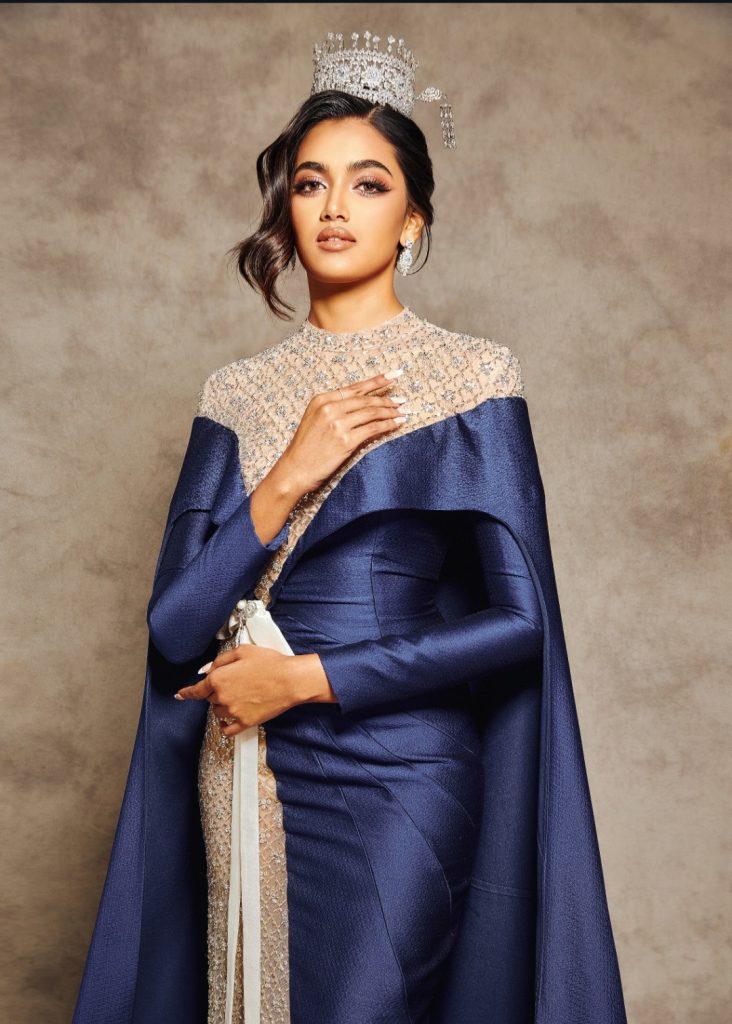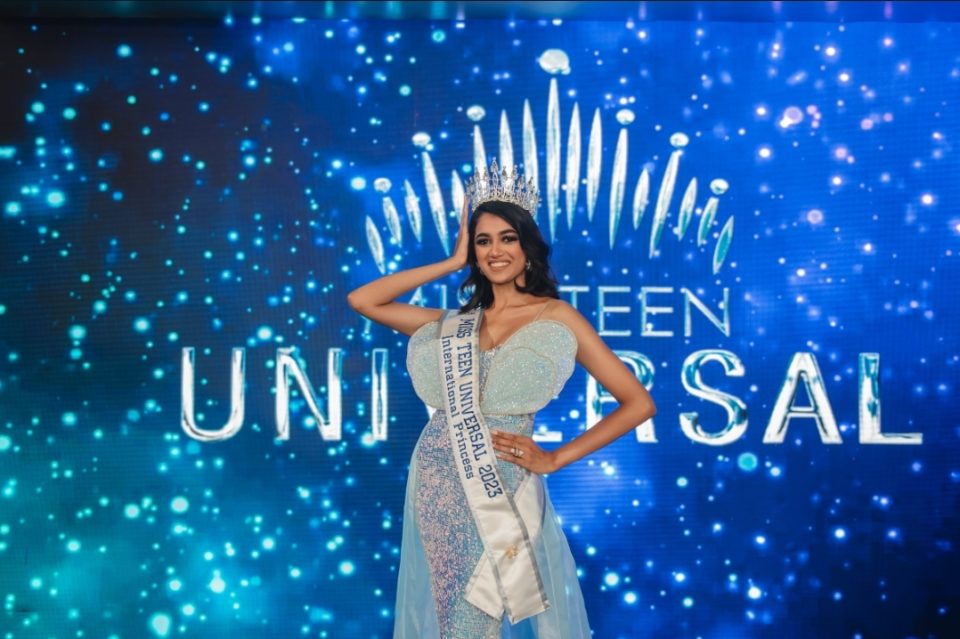Fashion, culture, and customer experience are intricately woven threads in today’s lifestyle fabric. When global runways merge with cultural narratives, they don’t just showcase style — they reshape perception, redefine representation, and reimagine the consumer’s emotional journey. At the recent Met Gala 2025, India made not just an entry — it made a statement. A statement that resonated with pride, elegance, and heritage, while aligning perfectly with the global shift toward inclusivity and cultural authenticity. A statement made by none other than Sweezal Furtado.
In this exclusive CXQuest interview, we connect with Sweezal Furtado, the reigning Miss Global India 2024, who brings her distinct perspective as a model and fashion entrepreneur. With roots in Bangalore and wings that span international style arenas, Sweezal Furtado is a torchbearer of evolving Indian fashion narratives. Her insightful article “India Reigns Supreme: A Fashion Reflection from the Met Gala 2025” resonated deeply, capturing both the visual grandeur and the cultural nuance of the event.
Today, Sweezal Furtado dives deeper. Beyond the glitz and glamour, she explores how fashion reflects societal trends, consumer values, and the emotional layers of identity. Join us as we discuss fashion’s new CX, sustainable storytelling, Indian designers on the global stage, and how representation truly shapes aspiration.
Miss Global India 2024
Q1. Sweezal, congratulations on being crowned Miss Global India 2024! How has the journey influenced your perception of fashion as a cultural experience?
SF: Thank you so much Mr. Jaideep. Winning Miss Global India 2024 has been a milestone for me. It was a transformative journey that shaped me personally and professionally. I was mesmerized by the cultural stories woven through fashion. Growing up in the coastal Karnataka town of Udupi, I always thought fashion to be a medium of self expression and individuality. Pageantry taught me that fashion is a dialogue between heritage, innovation and culture. Fashion has become an intangible part of our shared human stories from craftsmanship of regional textiles to the symbolic metaphor of certain silhouettes. Now I can say that fashion is anthropology in motion as clothing bridges communities, celebrates diversity and empower people to be proud of their local roots and simultaneously embrace the globe.
Met Gala 2025
Q2. Your article on the Met Gala 2025 went viral for all the right reasons. What inspired you to write it from a CX lens?
SF: Thank you. I don’t think it is viral. I wrote it from the comfort of my home while observing the Met Gala on internet in this Web 3.0 world. Also, I felt happy how Indian Opinion Makers and Icons like SRK, Manish Malhotra, Diljit, Priyanka Chopra were making India proud at a global platform. For me personally it was about immersion, resonance and engagement. Through social media, we all are Customers experiencing something from Met Gala 2025.
As data suggests, India has 491 million active social media users as of now. SRK topped the impact value rank with social media impression of 19 million eclipsing American and global giants like Rihana, Zendaya, Lewis Hamilton among others. I love India and I feel proud we Indians are a powerhouse for fashion and lifestyle. The Met Gala 2025 is a masterclass and a case study in how fashion intersects with culture, identity and experience.
SRK, Priyanka, Diljit, Kiara
Q3. SRK, Priyanka, Diljit, Kiara — each brought something unique. Which appearance moved you the most and why?
SF: All four cultural icons brought their own charisma and cultural pride. Each was iconic in its own right, a testament to their individuality, stardom and style. If I have to choose one presence that particularly moved me, it would be of Diljit Dosanjh. He didn’t just wear a designer outfit, he wore Punjab, pride and poetry. His appearance was culturally rooted in Punjab and yet it was boldly universal. It was a rare authenticity with performance in a sea of high-fashion cosplay. Also, Kiara Advani’s ensemble of Gaurav Gupta’s “Bravehearts” truly stood out. Her personal powerful style of embracing motherhood is commendable.
Q4. You mention cultural pride and visual storytelling. How do you think Indian fashion is evolving in global spaces?
SF: India has been a powerhouse of fashion since centuries considering the diversity, local roots and culture. Currently, I see Indian fashion is experiencing a renaissance on the global stage. We are not just ethnic but an equivalent to the global rooms. Indian fashion is becoming a language in itself globally. We are witnessing a confident stride towards showcasing our rich craftsmanship, textiles and design philosophies and influence the global narratives. The growing presence of Indian faces and aesthetics in international campaigns and runways further amplifies this cultural pride. This evolution is about more than aesthetics; it’s about asserting our voice in the global narrative and asserting that Indian fashion is as much about innovation as it is about heritage.
Customer Experience in Fashion
Q5. How important is customer experience in fashion today, especially with social media shaping brand-consumer dynamics?
SF: Customer Experience is the paramount in fashion today. Social Media and 4IR has empowered people with information democratization and amplified consumer voices. The relationship between brands and consumers have become direct and interactive. Today, a Gen Z consumer won’t just wear a brand apparel, they will Google, understand founders and their ideology, their sustainability score and ESG efforts, the company culture, their news presence and a lot more. Fashion has evolved from being transactional to relational. Social Media has accelerated trends and accountability. Brands are now expected to be transparent, responsive, and authentic. Every touch-point from a DM to a runway livestream shapes perception and loyalty. It is no longer enough to just offer beautiful clothes; brands must cultivate a holistic experience that resonates with their customers’ values and desires. This includes everything from seamless online shopping and personalized interactions to transparent communication and a sense of community.
Sustainable Fashion
Q6. Sustainable fashion is a growing trend. How do you balance style, sustainability, and CX in your personal and professional choices?
SF: Personally speaking, sustainability isn’t just a trend but a responsibility. Style and Sustainability are not mutually exclusive; they are interdependent. I would love to normalize sustainability not as a sense of sacrifice but as sensibility. Small shifts build big impact. I actively seek out brands and designers who prioritize ethical sourcing, mindful production, and longevity. From a CX perspective, brands that genuinely embrace sustainability often foster a deeper connection with consumers who share these values. Transparency and clear communication about their sustainable practices build trust and enhance the overall experience. As a consumer and fashionista, I advocate for transparency and encourage others to ask questions about where and how their clothes are made. Consumers now trust brands that walk their talk and every step counts.
Fashion Entrepreneur in the Making
Q7. As a fashion entrepreneur in the making, how do you envision building brands that deliver both emotional and aesthetic value to audiences?
SF: As an aspiring fashion entrepreneur, I want to create businesses that have both emotional and visual value. Fashion is more than just how something looks; it is also about how it makes you feel. I want my brand to communicate stories, reflect identities, and develop a sense of belonging. By combining culture, confidence, and creativity, I aspire to create works that allow people to express themselves authentically. Aesthetic value is crucial, but emotional connection creates loyalty and impact. Whether through inclusive designs, meaningful campaigns, or careful details, I imagine apparel that is not just beautiful but also functional. My goal is to create a brand experience in which consumers interact with the clothes on a deeper, more personal level rather than simply wearing them.
Q8. Designers like Sabyasachi and Manish Malhotra made waves at the Met. How vital is design narrative in enhancing the fashion CX?
SF: Design without narrative is just fabric. The success of ace Indian designers like Sabyasachi and Manish Malhotra on global platforms like the Met Gala underscores the vital role of design narrative in enhancing the fashion CX. With their outfits, they aren’t just telling a story and triggering emotions but inviting a global audience into their world. This narrative adds depth and meaning to the pieces, transforming them from mere clothing into cultural statements. When consumers understand the inspiration, the techniques, and the cultural context behind a design, it elevates their experience. A strong narrative enhances customer experience by making fashion feel relevant, relatable, and resonant. Narratives transform consumption into connection.

Voice of Identity
Q9. Finally, what message would you share with young Indians who see fashion not just as clothing, but as a voice of identity?
SF: To every young Indian who sees fashion as more than simply clothing, you are already ahead. Fashion expresses your individuality, culture, and ideals. It is how you express yourself before speaking. In a culture as diverse and vibrant as ours, fashion serves as a bridge between tradition and originality. Don’t be scared to mix old and new or to question norms with your style. Let your saree, streetwear, or signature outfit speak for you. Fashion should empower, not limit you. Wear something that makes you feel confident and connected to your roots. Most importantly, always remember that your authenticity is your most powerful and beautiful statement.
Shift in Cultural Currency
From the grandeur of the Met steps to intimate reflections on design, the voice of Sweezal Furtado captures more than style — it captures a shift in cultural currency. Fashion today is not merely about what one wears; it’s about what it says. It’s about values, narratives, heritage, and the experience it leaves behind.
Sweezal’s perspective seamlessly ties fashion with emotional resonance, representation with responsibility, and glamour with grounding. Her words remind us that India’s global presence in fashion is not a trend — it’s a movement. A movement led by stories, substance, and soulful design.
As Sweezal Furtado continues to shape the world of modeling and fashion entrepreneurship, her reflections illuminate the larger truth — that at its heart, customer experience in fashion is a dialogue between brand, culture, and individual. And India, through voices like hers, is speaking volumes.

